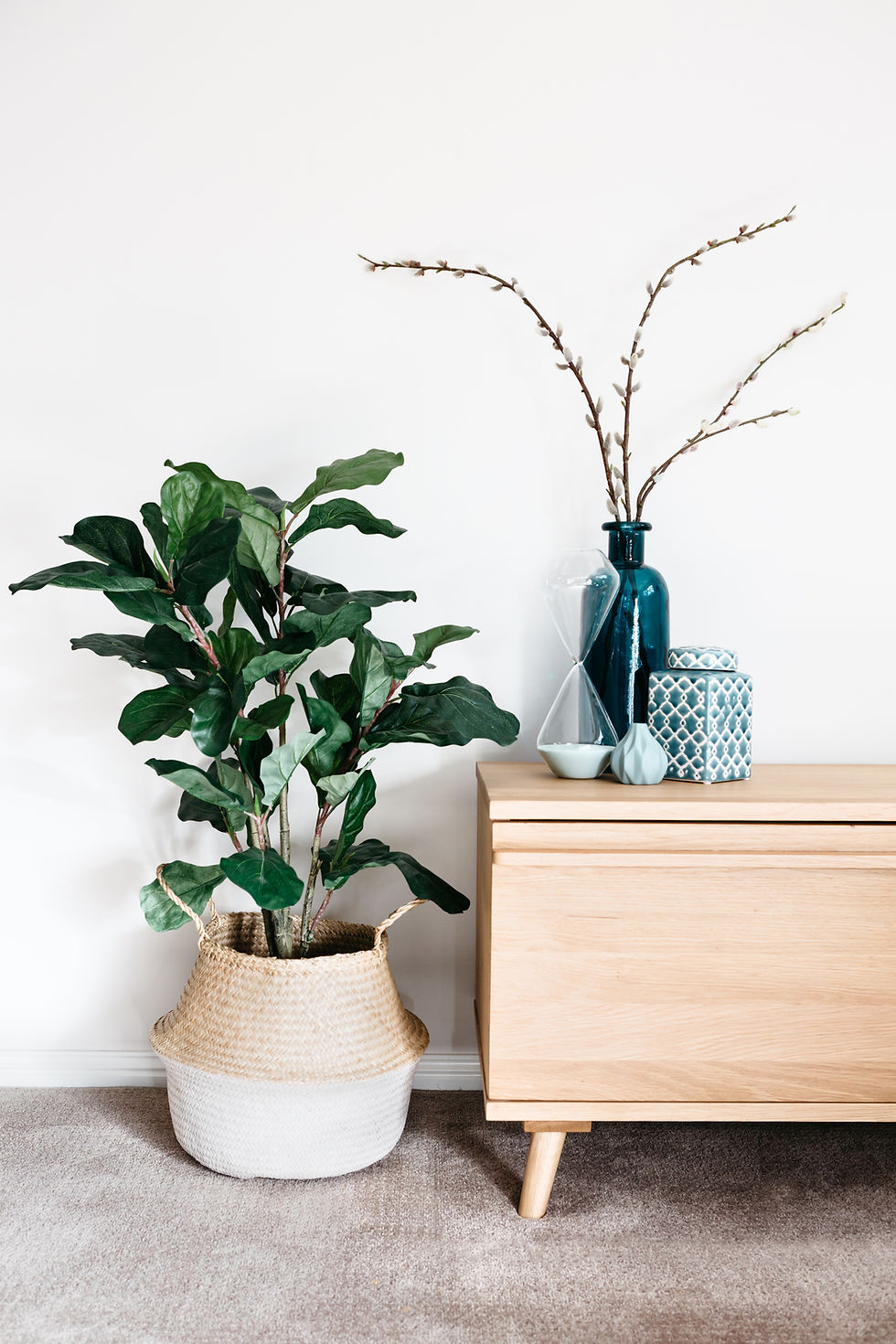Greening Spaces: Nurturing Homes, Sustaining Minds
- moniconeupane
- Jan 23, 2024
- 2 min read
In the hustle and bustle of urban living, where concrete jungles dominate the landscape, the importance of bringing nature indoors has never been more apparent. As we navigate the complexities of modern life, the integration of plants into interior design emerges as a transformative and sustainable solution. In this blog, we explore the symbiotic relationship between plants, interior design, green spaces, sustainability, and their profound impact on mental health in the context of identified urban problems.
The Green Revolution in Interior Design
Our homes are our sanctuaries, and by introducing elements of nature, we can create spaces that not only look beautiful but also contribute to our overall well-being. The incorporation of indoor plants into interior design has become a growing trend, and for good reason.

1. Aesthetic Appeal Meets Sustainability
In the pursuit of creating visually appealing spaces, interior designers are increasingly turning to plants as natural decor elements. This not only adds a touch of greenery but also aligns with the growing demand for sustainable design practices.
2. Air Purification and Environmental Impact
Plants act as natural air purifiers, filtering out pollutants and enhancing air quality. Considering the rising concerns about environmental issues, incorporating plants into interior spaces becomes a meaningful step toward creating a healthier and more sustainable environment.
Beyond the aesthetic and environmental benefits, green interiors play a pivotal role in nurturing mental health.
1. Biophilic Design and Stress Reduction
Research consistently shows that exposure to nature, even indoors, can significantly reduce stress and anxiety levels. Biophilic design, which integrates natural elements into the built environment, promotes a sense of calm and connection to the natural world.
2. Enhancing Productivity and Creativity
Green interiors have been linked to increased productivity and creativity. Whether in homes or workplaces, the presence of plants can inspire fresh ideas, foster concentration, and create a more vibrant and engaging atmosphere.
As we delve into the world of green interiors, it's crucial to address the urban problems that inspire this movement.

1. Urban Stress and Nature Deficit
The rapid pace of urbanization often leaves residents stressed and disconnected from nature. Green interiors offer a solution by bringing a touch of the outdoors into urban dwellings, counteracting the detrimental effects of a nature-deficient lifestyle.
2. Sustainability in Urban Living
Urban areas are at the forefront of environmental challenges. By promoting sustainable practices in interior design, such as using eco-friendly materials and energy-efficient solutions, we contribute to the collective effort to build a greener, more sustainable future.
Conclusion
In the ever-evolving landscape of interior design, the integration of plants, sustainability, and an awareness of mental health can reshape our living spaces. By addressing urban problems through innovative and nature-inspired solutions, we not only enhance our surroundings but also foster a healthier, happier, and more sustainable way of life. Embrace the green revolution within your spaces, and watch as it transforms not just your interiors but your entire perspective on modern living.
#Greenspaces #Interiordesigning #Smallbusiness #sustaunableinteriors #mentalhealth #biophilicdesigne





Comments